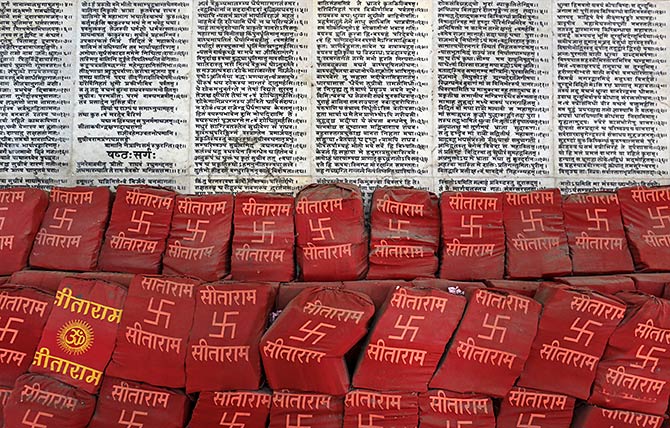Timeline of the Ayodhya dispute
November 09, 2019 10:11

1528:
First Mughal Emperor Babar is believed to have constructed Babri Masjid
1885:
Mahant Raghbir Das moves Faizabad court seeking permission to construct a temple in the vicinity of the Babri Masjid. The plea is declined.
December 22-23, 1949:
Idols of Lord Ram is mysteriously found inside the mosque
1950:
Gopal Visharad and Ramachandra Das moves Faizabad court for permission to worship the idols
1959:
Nirmohi Akhara files plea seeking possession of the disputed land.
1961:
Central Sunni Waqf Board, U.P., moves court for declaration of title of the disputed land and removal of the idols inside the mosque.
February 1986:
Faizabad court allows Hindus to worship the idols.
August 1989:
Allahabad High Court takes over the title dispute. Orders status quo.
November 1989:
The Rajiv Gandhi government allows Vishwa Hindu Parishad (VHP) to perform puja near the disputed site.
September 1990:
BJP leader L.K. Advani begins rath yatra
December 1992:
Kar sevaks demolish Babri Masjid. Justice Liberhan Commission appointed to probe.
1993:
P.V. Narasimha Rao government acquires 67 acres of land adjoining the disputed site. The Supreme Court upholds the acquisition in its Dr. Ismail Faruqui judgment.
April 2002:
Allahabad High Court commences hearing the title suits.
March 2003:
SC bans religious activity in the acquired lands in Mohd. Aslam @Bhurre case.
2009:
Liberhan Committee submits inquiry report.
September 30, 2010:
High Court delivers a majority judgment for three-way partition of the disputed property among Hindus, Muslims and Nirmohi Akhara.
May 2011:
SC stays the high court judgment on cross-appeals filed by the parties.
August 2017:
A three-judge Bench of the Supreme Court led by Justice Dipak Misra begins hearing the appeals. The main title issue is side-tracked. Muslim parties seek a reference of a contentious observation made in the Faruqui judgment that worshipping in mosques are not integral to Islam to a Constitution Bench. A majority judgment is pronounced declining the prayer.
January 2019:
A Constitution Bench of five judges led by Chief Justice of India Ranjan Gogoi resumes hearing the title appeals but suggests mediation first.
August 6, 2019:
Mediation committee led by former Supreme Court judge, Justice F.M.I. Kalifulla fails to draw a consensus and court hearing commences.
October 16, 2019:
After 40 days of hearings, the Constitution Bench reserves judgment
November 9, 2019:
Constitution Bench lists the appeals for judgment
Image: A wall with the inscription of the Ramayana seen inside a temple in Ayodhya, in this photograph taken October 22, 2019.





 © 2024 Rediff.com -
© 2024 Rediff.com -